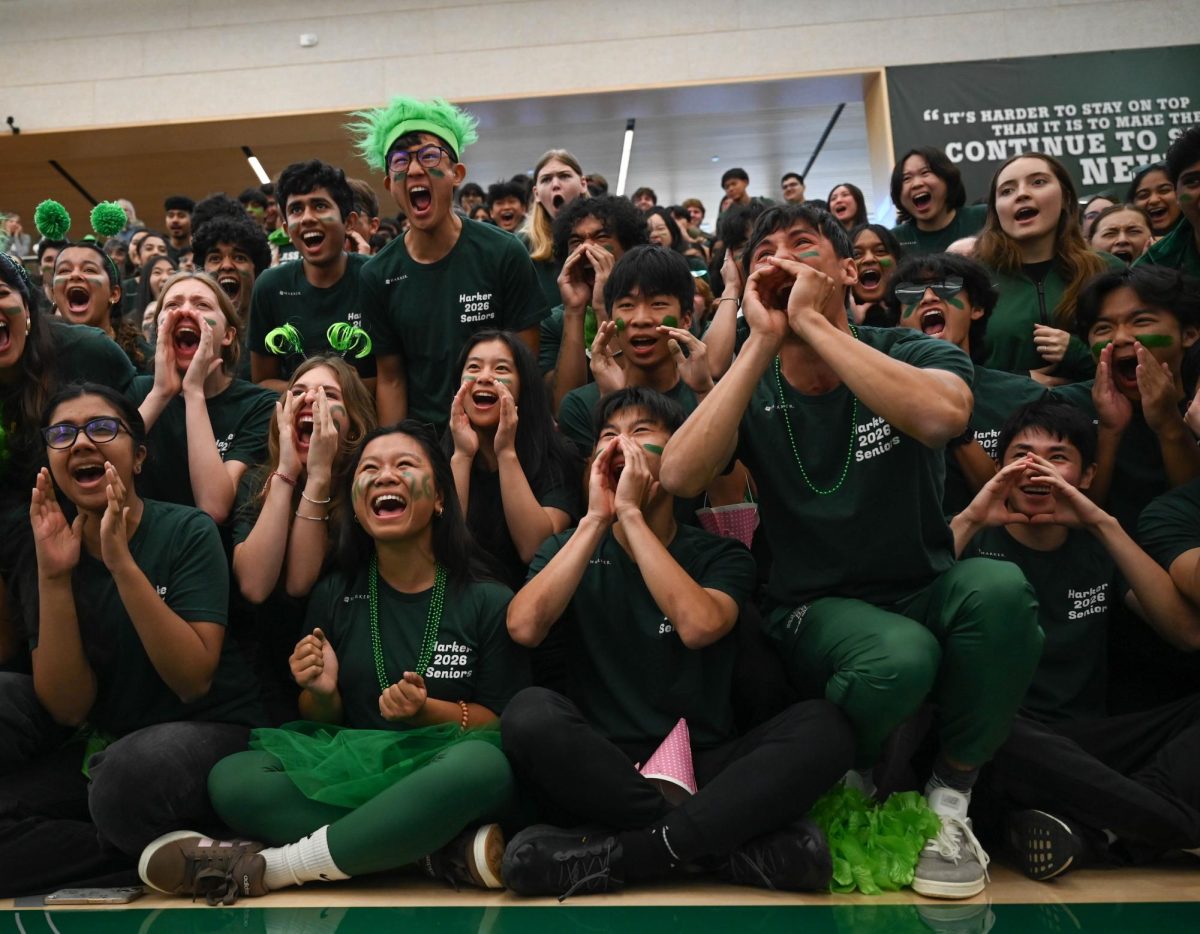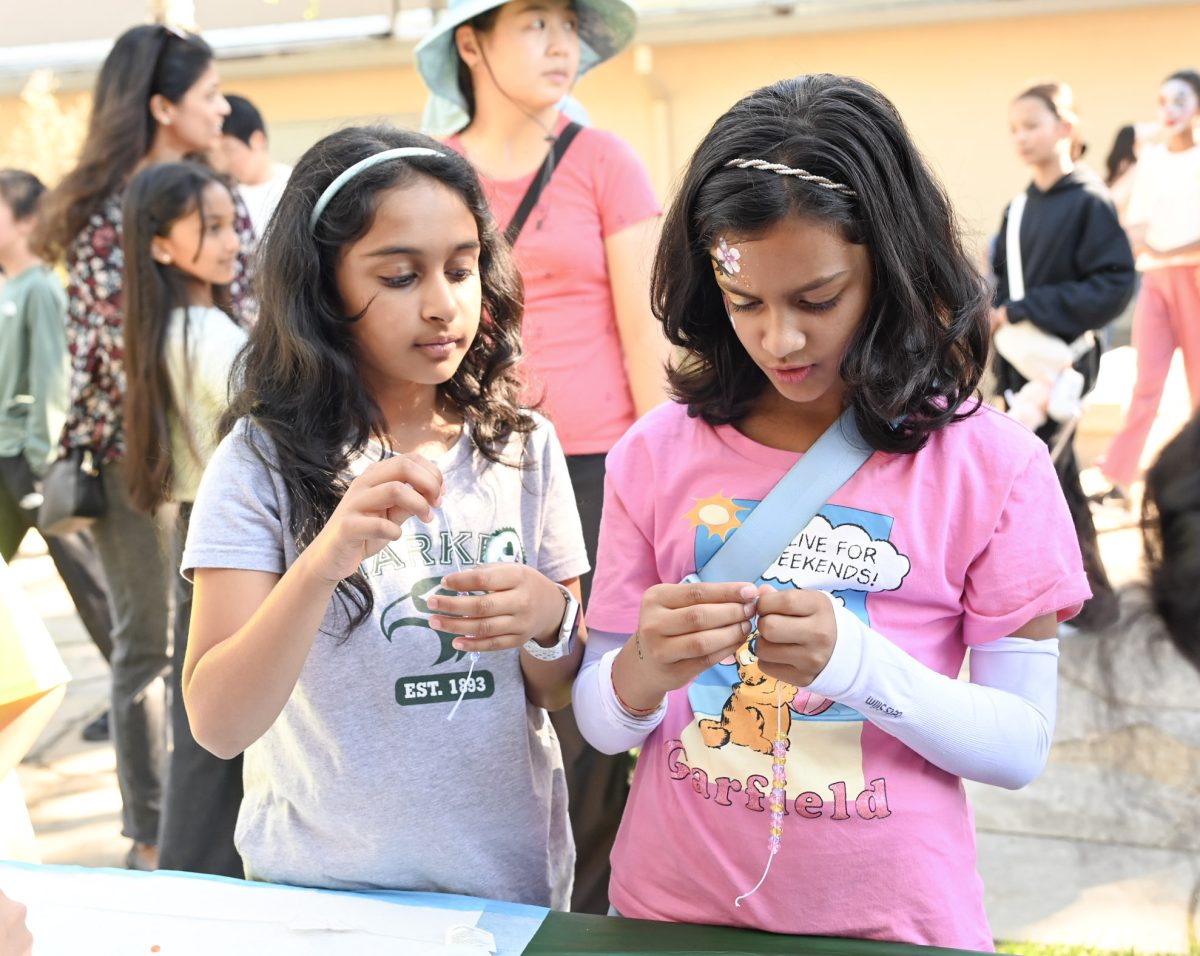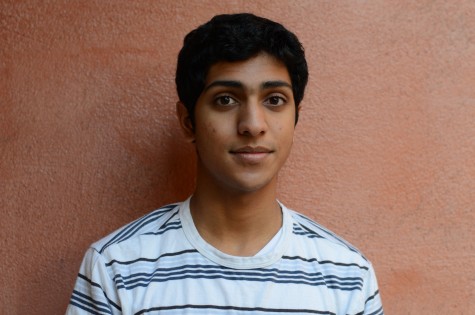The Upper School robotics team participated in the Calgames Robotics Tournament and placed last on Saturday, October 13.
The competition, held at Woodside High School, followed the same rules and style as the official First Robotics Competition (FRC) tournaments, which occur every spring. Thirty-six high schools competed in this year’s event.
The field the robots played on consisted of a large rectangular area with basketball hoops situated at both ends. A small ridge, meant to impede robots, bisected the field, and three seesaw-like bridges allowed robots to cross it. The game, known as “Rebound Rumble”, involved the robots shooting foam basketballs into the basketball hoops to score points over a period of two and a half minutes.
Each match was divided into an autonomous phase, when the robot played without driver control; a tele-operated phase, when drivers controlled the robots manually; and an endgame phase, in which teams earned bonus points for special tasks. Robots were divided into groups of three, called alliances, and matches were played between two alliances competing for the most points. The tournament featured multiple-round playoffs and elimination rounds to determine the champion.
This year, the Upper School team faced several technical hurdles, including battery problems and a jammed shooter system, according to robotics team president Michael Yu (12).
“It seems that the drive train is kind of breaking right now, so we could have improved that, the shooting system, and pretty much everything,” member Tyler Yeats (12) said between matches.
Michael served as the robot’s driver for this year’s Calgames. He controlled the team’s robot, Kinematix, via a wireless connection from driver control stations behind the basketball hoops. In addition to shooting basketballs, the robot was programmed to record and calculate certain information about its state and the game.
“The robot knows its position on the field, and it can find the goals and the balls […] It’s similar to BattleField 3 in a way, in that we looked at games and said ‘Can we do things on our robot that are in games?’” Michael said.
He sent commands to the robot using a game controller and a computer in conjunction.
In spite of technical setbacks, this year’s robot featured technological improvements from previous years, according to Sarika Bajaj (11), one of the current heads of the team’s electronics department.
“We actually found a way to have an elevator system for balls, which we have always struggled with in the past and worked this year. […] Last year, Ravi, the electronic head from the previous year, managed to make the e-plate, which was a much neater, much cleaner way to do electrical systems,” Sarika said.
Unlike FRC Tournaments, Calgames does not have a corresponding national level competition, but it does confer awards on the best teams. In 2011, the Upper School team won the Mentor of the Year and Design Awards.
Calgames was the last game Kinematix was scheduled to play in, and the robot will no longer be used. The team is currently focusing their efforts on pre-season training and preparing for the next FRC Challenge, which will be released in January.




![LALC Vice President of External Affairs Raeanne Li (11) explains the International Phonetic Alphabet to attendees. "We decided to have more fun topics this year instead of just talking about the same things every year so our older members can also [enjoy],” Raeanne said.](https://harkeraquila.com/wp-content/uploads/2025/10/DSC_4627-1200x795.jpg)


















![“[Building nerf blasters] became this outlet of creativity for me that hasn't been matched by anything else. The process [of] making a build complete to your desire is such a painstakingly difficult process, but I've had to learn from [the skills needed from] soldering to proper painting. There's so many different options for everything, if you think about it, it exists. The best part is [that] if it doesn't exist, you can build it yourself," Ishaan Parate said.](https://harkeraquila.com/wp-content/uploads/2022/08/DSC_8149-900x604.jpg)




![“When I came into high school, I was ready to be a follower. But DECA was a game changer for me. It helped me overcome my fear of public speaking, and it's played such a major role in who I've become today. To be able to successfully lead a chapter of 150 students, an officer team and be one of the upperclassmen I once really admired is something I'm [really] proud of,” Anvitha Tummala ('21) said.](https://harkeraquila.com/wp-content/uploads/2021/07/Screen-Shot-2021-07-25-at-9.50.05-AM-900x594.png)







![“I think getting up in the morning and having a sense of purpose [is exciting]. I think without a certain amount of drive, life is kind of obsolete and mundane, and I think having that every single day is what makes each day unique and kind of makes life exciting,” Neymika Jain (12) said.](https://harkeraquila.com/wp-content/uploads/2017/06/Screen-Shot-2017-06-03-at-4.54.16-PM.png)








![“My slogan is ‘slow feet, don’t eat, and I’m hungry.’ You need to run fast to get where you are–you aren't going to get those championships if you aren't fast,” Angel Cervantes (12) said. “I want to do well in school on my tests and in track and win championships for my team. I live by that, [and] I can do that anywhere: in the classroom or on the field.”](https://harkeraquila.com/wp-content/uploads/2018/06/DSC5146-900x601.jpg)
![“[Volleyball has] taught me how to fall correctly, and another thing it taught is that you don’t have to be the best at something to be good at it. If you just hit the ball in a smart way, then it still scores points and you’re good at it. You could be a background player and still make a much bigger impact on the team than you would think,” Anya Gert (’20) said.](https://harkeraquila.com/wp-content/uploads/2020/06/AnnaGert_JinTuan_HoHPhotoEdited-600x900.jpeg)

![“I'm not nearly there yet, but [my confidence has] definitely been getting better since I was pretty shy and timid coming into Harker my freshman year. I know that there's a lot of people that are really confident in what they do, and I really admire them. Everyone's so driven and that has really pushed me to kind of try to find my own place in high school and be more confident,” Alyssa Huang (’20) said.](https://harkeraquila.com/wp-content/uploads/2020/06/AlyssaHuang_EmilyChen_HoHPhoto-900x749.jpeg)











